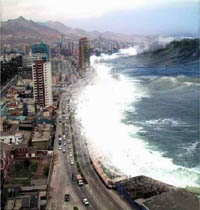Officials discuss Indian Ocean tsunami warning system
A tsunami that killed 600 people in Indonesia two weeks ago illustrated that point, said Patricio Bernal, the director of the U.N's Intergovernmental Oceanographic Commission, calling the disaster "very frustrating."

Two regional agencies warned that a powerful earthquake could spawn destructive waves off Java island's southern coast, but officials in the capital Jakarta did not pass them on to local communities in time.
Responsibility does not simply lie with central government officials, he said, but communities themselves must also be involved in raising awareness.
The U.N. working group meeting came 19 months after a 2004 quake and tsunami killed 216,000 people in a dozen nations.
Twenty-three monitoring stations have since been put in place to quickly measure the strength of underwater quakes and assess the tsunami threat.
That information is sent to the Hawaii-based Pacific Tsunami Warning Center and the Japanese Meteorological Agency, which then relay it to individual countries at risk.
Some of the experts who took part in the Bali meeting stressed the importance of educating children in schools about tsunamis, and having plans in place to quickly move vulnerable populations, such as the elderly or young children, away from the shore, the AP reports.
They said it's also important to raise overall knowledge and awareness, such as placing signs on beaches and cards inside hotel rooms alerting visitors to move quickly away from the coast to higher ground if they feel an earthquake.
Subscribe to Pravda.Ru Telegram channel, Facebook, RSS!

